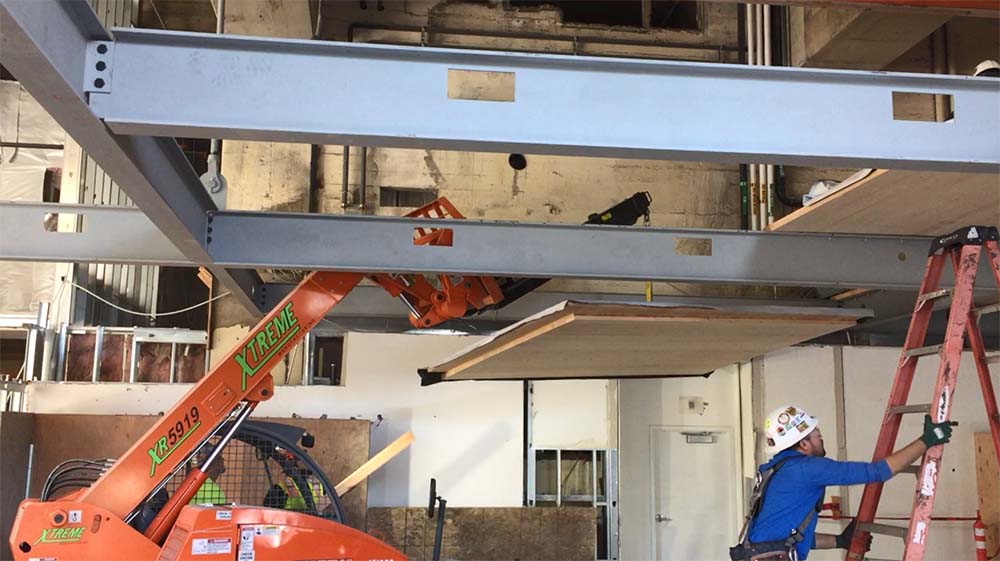The setting is raw and open. Huge blocks of sunlight shift through 20-foot tall windows. The Oregonian used to print newspapers here. Winch trolleys, reminiscent of freight train wheels, roll along heavy steel hoist beams hanging high above the floor from massive concrete girders. Now THIS is a place to be inspired.
In the midst of this scene, the construction of SRG’s future office is taking place. The space is vast enough that last week’s installation of the new mezzanine floor brings a welcome and elegant human proportion. The deck structure is, of course, Cross Laminated Timber. What other material could be so warm, inviting, singular, and connect us directly to our forested bioregion? The 3-ply panels are strong, made of Douglas fir boards selected especially for their strength; here they achieve over 5 feet of cantilever. We will walk directly on them, a natural resin finish protecting them from stains. We expect wear to appear gradually in the softwood, to celebrate use and the passing of time.

Into this wide-open space, we inserted a steel frame to support the timber floor. The western side of the mezzanine bears on an original slab, but the northern side is suspended from the giant girders, due to a newer slab below with much less bearing capacity. The frame dimensions were dictated by the existing building’s column locations, but because CLT can support itself in two directions (the very reason we used it at the zoo), we could play with cantilevers in a way no other material allows.
SRG knows CLT, so we decided to produce the manufacturing drawings ourselves. We used Revit to draw each panel, each one unique with a different set of cuts for the manufacturer’s CNC machine to perform. We exported our drawings into 3D files that the manufacturer, DR Johnson, could input directly. They gave us feedback when our designs were incongruent with the technology they use. This is new for us, this direct connection with the material supplier, and we loved it. We felt closer to the making of the project and more in touch with the capabilities of the material. We decided early on to procure the panels ourselves, with thanks to our general contractor, Fortis, for keeping an eye on our coordination approach.
We discussed in detail things we usually are not involved with: manufacturing processes, truck loading, truck unloading, sequencing, field cuts, staging, installation equipment, and pick points. Since CLT is a new technology to everyone involved, we all learned something in the process.



